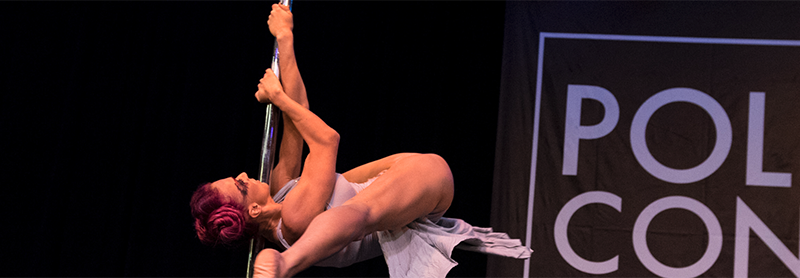There are several reasons people start pole dancing as a hobby. Some are looking for…

How to price your pole-based product business
Pole-based business products might include (but are not limited to) merchandise, apparel, shoes, accessories, products to improve or modify your grip, apparatus, apparatus cleaners, apparatus attachments/improvements, books (ebooks or physical), templates, online/virtual/pre-recorded tutorials/workout programs, or other products that are focused on or tangential to the pole industry.
Pricing products involves a different methodology than pricing services. There are many factors to consider, and while some pricing strategy recommendations involve some “art” or subjectivity, there are also some solid “science” recommendations. We’ll cover both types of factors in this post.
First, start with some research
For a location-specific business, like a business that has a physical storefront, use online search tools like Google and search for similar businesses in your area to find out what they charge for similar products. Most product businesses (unless they have a 100% custom product) will have prices listed on their website. If there are no other similar businesses in your general area (loosely defined as a realistic travel time to your storefront, perhaps an hour or less depending on location), consider looking at product-based companies in tangential industries, such as fitness, yoga, adult, or circus.
For businesses that are not location specific and/or are offered virtually, also use online search tools and search social media for hashtag relevant terms. Most product businesses do publish their prices to sell online.
Knowing your competitors’ pricing is just the start of developing your pricing. You must also consider the costs specific to your business, the cost to create your product, the cost to ship your product (if relevant), your business goals, what you want to be paid after expenses, and what the market will pay for your product.
Understand your costs
Direct costs are the costs directly related to the product(s) you sell. The most common direct cost for a product-based business is the cost of goods sold. This is the cost to produce your product. For instance, if you make custom printed t-shirts, this may include the cost of the basic shirt, the cost of the t-shirt printing machine, and the cost of the ink. Direct labor, the cost of hiring someone to create your product, may be included in the cost of goods sold or be separate. Other types of direct costs include software directly used for managing your inventory of products, licenses to legally conduct your business, and any assets or equipment you purchase specifically to create your product.
Overhead costs are general business expenses that keep your business operational. Regardless of whether you have clients or not, you’ll still incur these costs. Overhead costs are costs like rent for your storefront or manufacturing space, software that runs your business (such as Quickbooks) and any labor that isn’t a direct cost to creating your product, such as hiring an accountant, a marketing/sales person, or other.
Shipping costs may be included in your direct costs if you pass those costs on to your customers, or they may be part of your overhead costs. Most modern businesses ship products and must consider shipping costs.
If you have different products, you will need to understand the different direct costs for every product.
Understand how costs affect your product price
The price for your product must cover your direct costs to create the product and any overhead costs to keep your business in business.
Your overhead percentage is the percentage of money from all sales that goes toward paying your overhead costs. To calculate your overhead percentage, you need:
- Your annual gross revenue or anticipated revenue
- Your annual operating costs
The overhead percentage formula is:
Expenses / Gross Sales = X
X * 100 = Overhead Percentage
This number will give you how much of your sales go toward paying for the overhead costs of your business.
How much money do you want to make?
Ask yourself how much you want to get paid for running your product-based business. This is not your final price to your customer. That final pricing number will include your direct costs and overhead percentage as well as how much you want to be paid. This is your profit. ALWAYS factor profit into your business pricing. 20% is generally a good starting point for profit but know that every business is different.
Putting it all together to determine your price
There are many ways to price your product(s). We’ll start with the easiest and move toward more complicated.
Cost-plus pricing
This type of pricing applies to any product.
Add all your costs per product to your profit margin to determine the price of your product: Direct Costs Per Product (material costs and labor) + Overhead Costs (adjusted to be per product) + Profit Percentage = Product Price
Note that some expenses will stay the same regardless of how many products you create, such as overhead costs like business software. Some costs will change, such as if you are able to buy more materials in bulk, you may receive better pricing from your suppliers.
Competition-based pricing
This type of pricing may apply if you have a similar product as something that is already on the market and you want to differentiate yourself.
First, understand the cost to make your product then, strategically, you can:
- Price higher than the typical price in the market, highlighting your product’s quality or uniqueness, making sure to account for your costs
- Price at the exact same as your competitor, making sure to account for your costs
- Price lower than your competitors to try and steal customers, potentially strategically choosing to forego profit or even to lose money (not accounting for costs) to gain market share
Dynamic Pricing
This type of pricing is potentially the most complicated pricing strategy. It is also the strategy that might either delight or alienate your customers.
This type of pricing means you set and then change your pricing multiple times in an hour, day, month, etc. based on changing factors, such as demand. Larger retailers like Amazon and even some service-based businesses such as Uber employ this pricing, which is sometimes called “surge” pricing. To efficiently use this pricing, you will need to have specific software that adjusts based on triggers. Otherwise, it can be time-consuming and confusing to change your prices regularly.
Adjust your price as needed
Finally, after all the math is done, now you apply the “art” of pricing and adjust your prices to meet your own needs and the needs of the market. This should include what you feel people will pay, and it should also consider if your prices are sustainable for your personal situation. Pricing to include profit enables you to grow your business. Pricing simply to break even will not.
Review your pricing regularly (such as monthly, quarterly, or yearly depending on your situation) and consider increasing pricing for your products as things change in your business. Things that could change include rising direct or indirect costs (such as increase shipping costs, increase cost for materials to produce your product), competitors entering or leaving the market, popularity of your product, and other factors.
Pricing your pole-based business products well can have a huge impact on the long-term success of your business and its sustainability. Keep your price changes rooted in “science” but with enough flexible “art” to reflect the needs of the market and of yourself.



